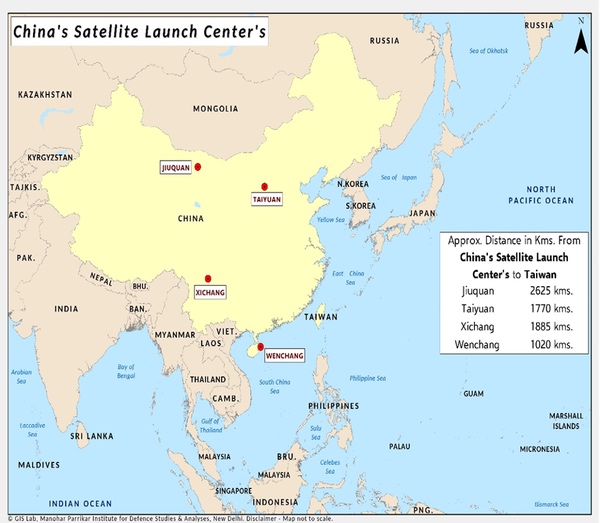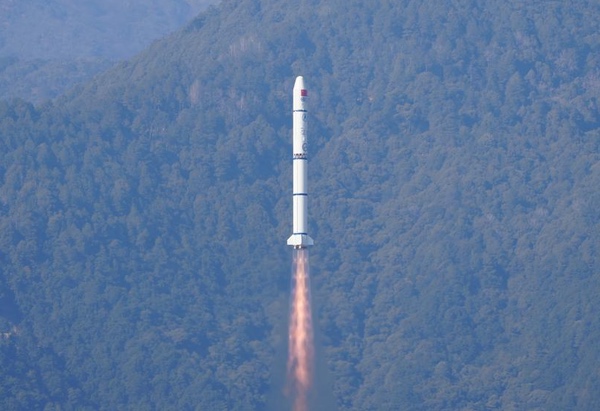Space-related incidents during Taiwan’s electionsby Ajey Lele
|
| There is a possibility that Taiwan could have used the opportunity of the flyover of the satellite launch vehicle to raise the China bogeyman during election time. |
One, on the afternoon of January 9, just days before the election, Taiwan’s Ministry of National Defense (MND) issued a warning about the overflight of a rocket by China. It was an air raid alert. All mobile users had received this alert. Two, from December until around January 12, around 20 Chinese high-altitude balloons were spotted by Taiwanese agencies in and around their airspace, mostly crossing the central line of the Taiwan Strait. Some were also known to have passed over important military installations. After the elections, there were also some reports indicating the sighting of six balloons and four Chinese warplanes and four navy ships around Taiwan.
For some time now, Chinese authorities have been claiming that they are using such high-altitude balloons for weather observations and for conducting experiments. A year ago, from January 28 to February 4, 2023, a high-altitude balloon from China was spotted across North American airspace. It is known to have flown over Alaska, western Canada, and the adjoining parts of the US. Finally, the US Air Force shot down the balloon on February 4. Another balloon was spotted over Latin America around the same time and Chinese officials had admitted to owning this balloon too. According to them it was an unmanned research airship and had its course derailed by the weather.
It is important to put both these incidents in a geopolitical and strategic context. There is a possibility that Taiwan could have used the opportunity of the flyover of the satellite launch vehicle to raise the China bogeyman during election time. There was an interesting wordplay from the side of the Taiwanese authorities in this regard. When the alert was issued on the mobile phones, they had used the words “satellite launch by China” in vernacular language, while in English the word “missile” was used. The warning was meant to make people aware, they said. On the other hand, it could be argued that the veiled Chinese pressure during the election period was so much that Taiwan was not ready to make any changes and hence issued the warning.
The Chinese launch was of a scientific satellite (the Einstein Probe mission), from the Xichang launch center in Sichuan province. This rocket passed over the southern part of a Taiwanese island. There is a possibility (no definitive information is known) that no prior warning was given to Taiwan via routine dissemination of Notices to Airmen (NOTAMs). However, on some earlier occasions, like China launching a weather satellite on April 16, 2023, there was an alert given to civilian flights that the trajectory of this satellite could pass through Tawain’s airspace. Interestingly, just two days after the January 9 incident, China performed two more satellite launches, but neither of them passed near Taiwan. Taiwan’s MND was aware of these launches. One launch had happened from the Jiuquan Satellite Launch Center and the other from a location at sea near Shandong Province.
The diagram below gives some broad ideas about the locations of various launch sites for launching satellites in China.
 |
The diagram above indicates, as a very basic conclusion, that on a few occasions based on the type of mission, there is a possibility of the rocket overflying Taiwan and its surroundings. However, given standard practices, it is incumbent on China to give prior notice to Taiwan and other states in the region. When it comes to airspace management, China has a bad track record. More than a decade ago, in Novemeber 2013, they announced the establishment of an “East China Sea Air Defense Identification Zone (ADIZ)” without consulting their neighbors like Japan and Taiwan.
Broadly, rocket launch trajectories is an issue that could have larger security ramifications. All over the world, strict safety precautions are followed in this regard. There could be issues related to accidental explosion or intentional self-destruct instruction given to the rocket following a failure or any potential falling debris. Presently, the security situation in the Taiwan Strait and adjoining parts of South China Sea is very delicate. China needs to appreciate that Taiwan lies in the so-called “first island chain” that includes states and territories that are friendly with the US. Any incident involving rocket launch trajectories is detrimental to the security of the region and hence there should not be any surprises from China’s side.
| Any incident involving rocket launch trajectories is detrimental to the security of the region and hence there should not be any surprises from China’s side. |
The issue of balloons needs to be viewed on a larger strategic canvas. Accoring to the South China Morning Post on November 20, 2023, the People's Liberation Army (PLA) now has a Fifth Force called “Near-Space Command” in addition to the Army, Navy, Air Force, and the Rocket Force. Near Space is an area in Earth's atmosphere, roughly between 20 to 100 kilometers altitude above the Earth’s surface. It has been reported that this command would be mainly responsible for operations of hypersonic weapons of the PLA. For some time, much debate is found happening about Near-Space Command and hypersonic weapons. However, it is important to note that this command is also responsible for balloons, solar-powered long-endurance drones, and other related paraphernalia. Various balloon related incidents that happened during the last year over the US, Latin America, and Taiwan need to be viewed from the larger backdrop of the formation of the Near-Space Command. With these incidents of Chinese balloons moving in various parts of the world, it is important to realize that China is testing technologies and creating structures for the purposes of intelligence, surveillance and reconnaissance (ISR) capabilities. Eventually, all this will assist them in enhancement of their reconnaissance-strike capabilities program.
On the whole both these incidents happened around election time in Taiwan, which indicate that space technologies will continue to have its share of relevance in the Taiwan theatre irrespective of whether there is status quo, conflict, peaceful reunification, or peaceful resolution.
Note: we are now moderating comments. There will be a delay in posting comments and no guarantee that all submitted comments will be posted.
